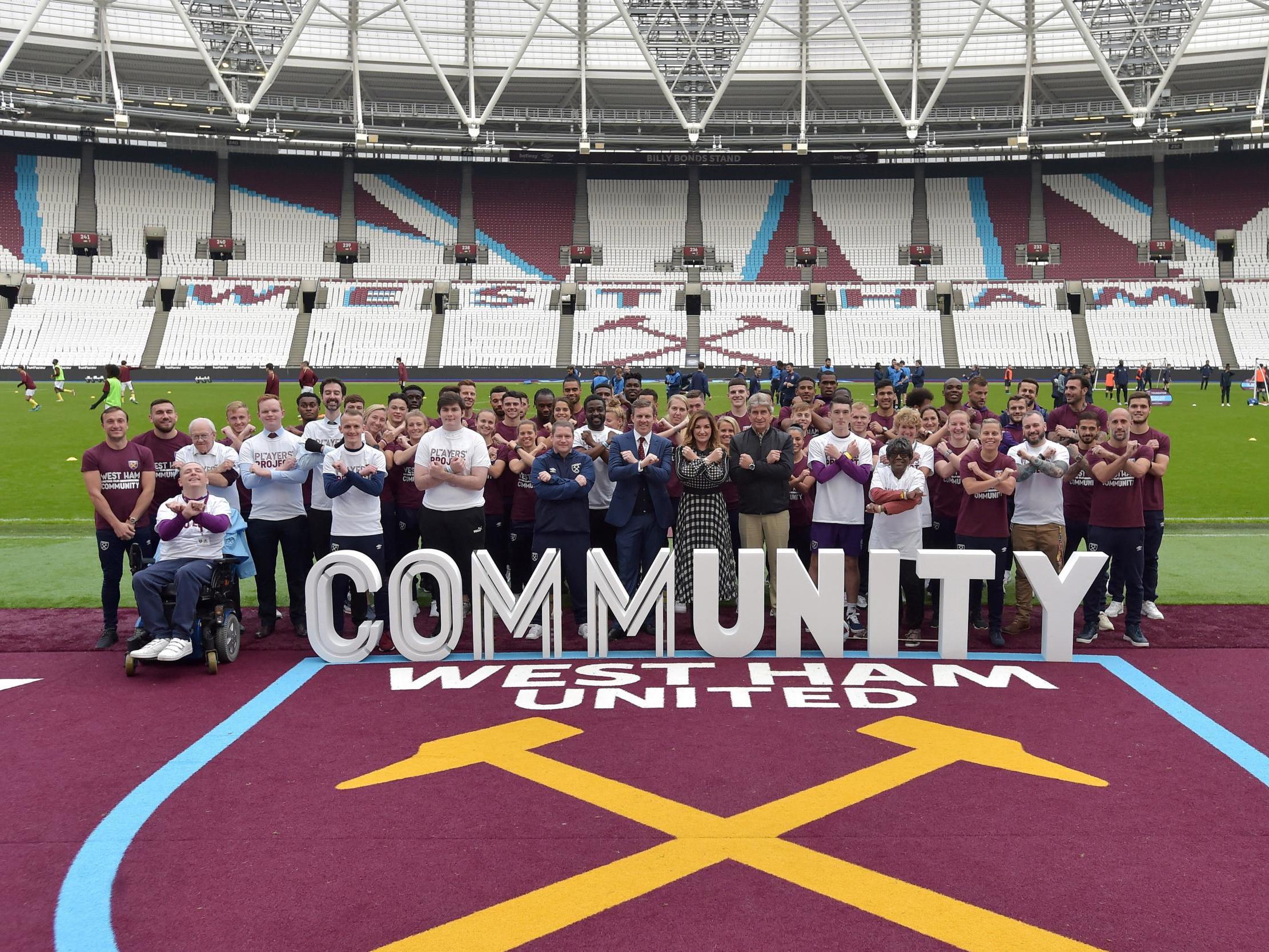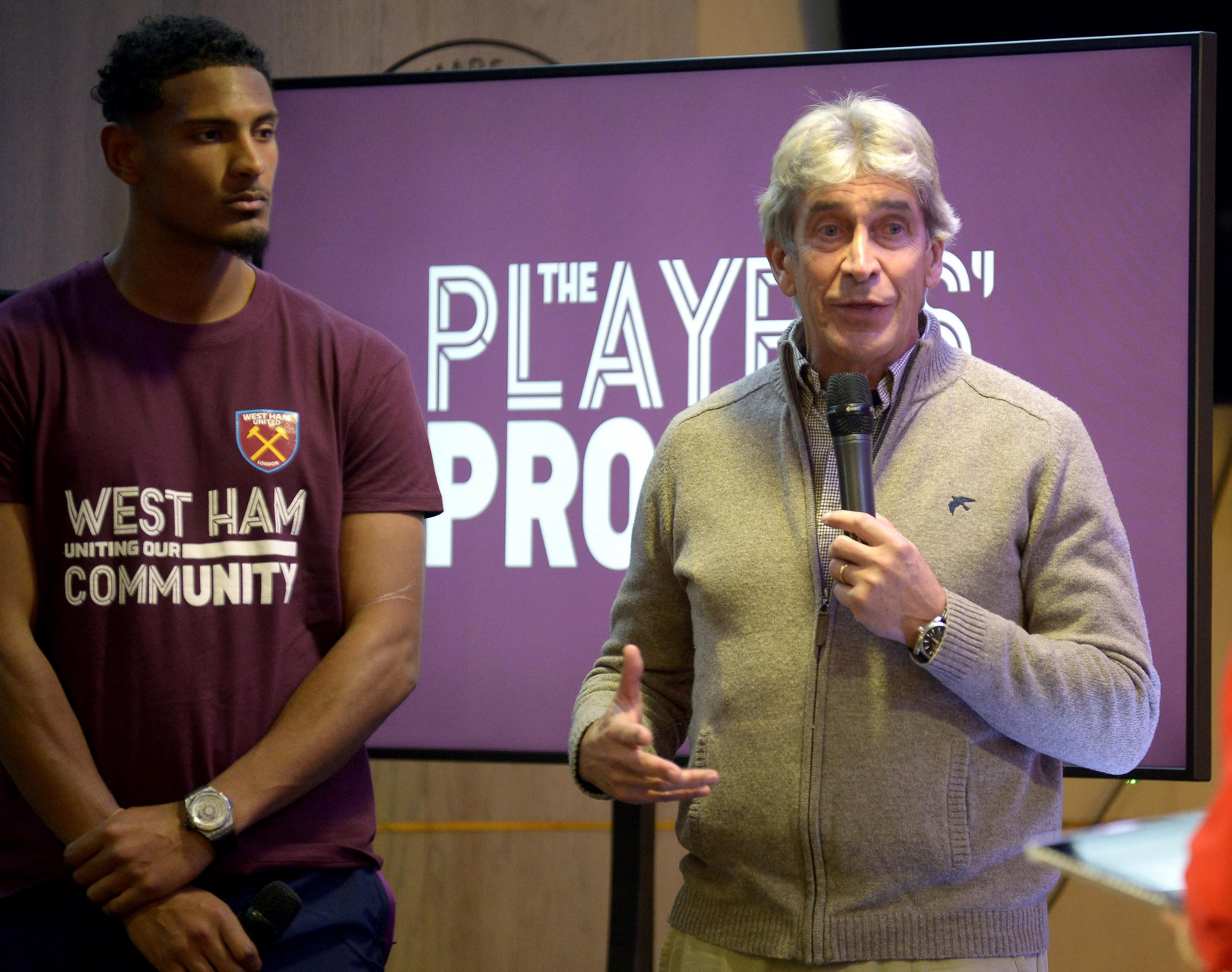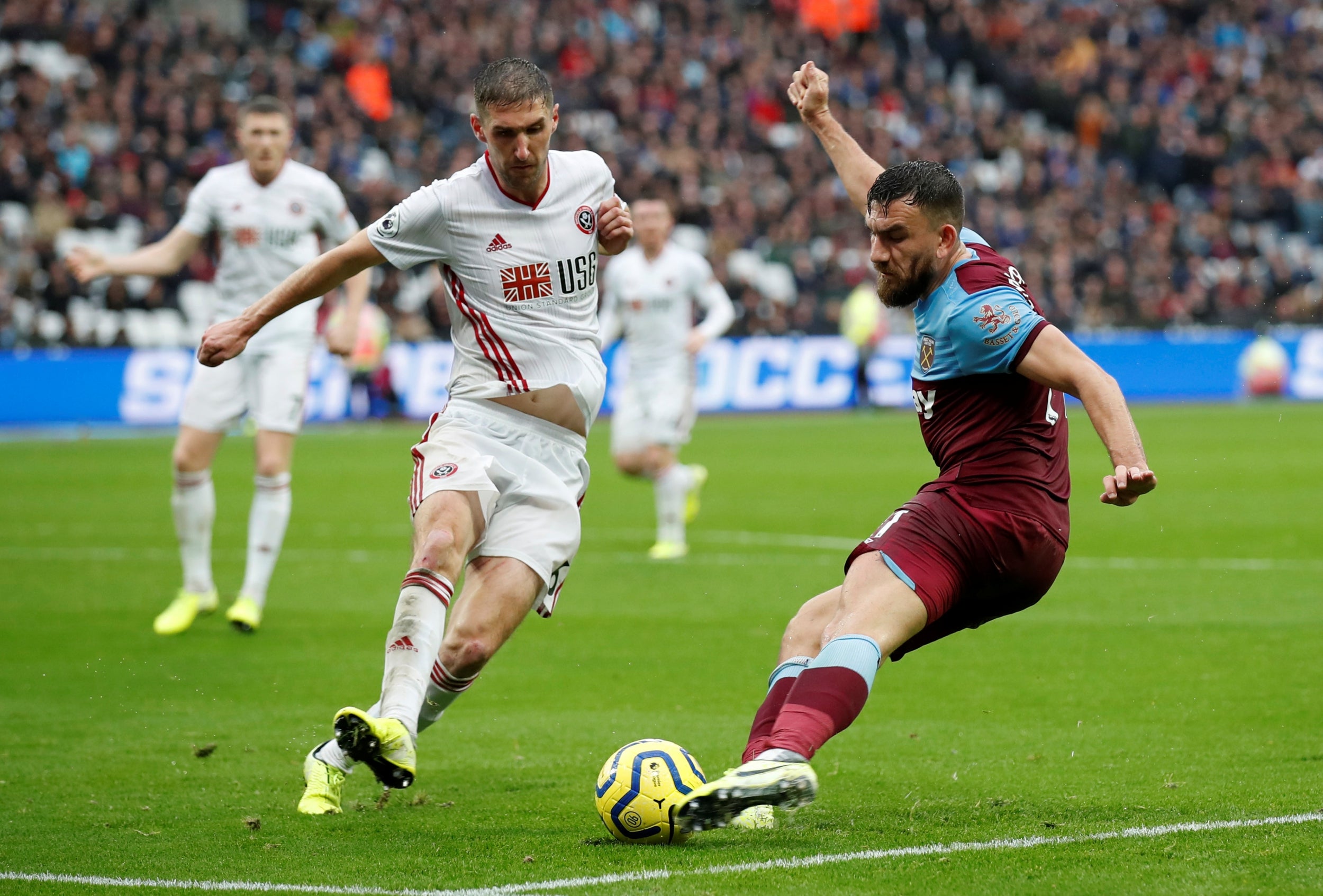Why West Ham have more to offer east London than football
Football grounds act as key focal points for the wider community, and in one of the most impoverished boroughs in London the expectation on West Ham is greater still

Your support helps us to tell the story
From reproductive rights to climate change to Big Tech, The Independent is on the ground when the story is developing. Whether it's investigating the financials of Elon Musk's pro-Trump PAC or producing our latest documentary, 'The A Word', which shines a light on the American women fighting for reproductive rights, we know how important it is to parse out the facts from the messaging.
At such a critical moment in US history, we need reporters on the ground. Your donation allows us to keep sending journalists to speak to both sides of the story.
The Independent is trusted by Americans across the entire political spectrum. And unlike many other quality news outlets, we choose not to lock Americans out of our reporting and analysis with paywalls. We believe quality journalism should be available to everyone, paid for by those who can afford it.
Your support makes all the difference.When it comes to the Premier League, something is always brewing in the capital.
Across 11 hours in north London, Tottenham sacked Mauricio Pochettino, one of the most engaging managers of the last five years, and replaced him with one of the most divisive in Jose Mourinho.
Arsenal fans were wondering if the man now in charge of their bitter rivals might have been the one for them. Alas, now there are fewer qualified and available alternatives to replace their stumbling Unai Emery.
Mourinho’s former club Chelsea meanwhile are thriving. Yet even as they watched the events from out west, they could not totally revel in Spurs’ dismay. On Wednesday, they had their own problems to worry about as they contested their Fifa transfer ban at the Court of Arbitration for Sport.
Usually, actually playing football brings some respite from these woes. But, as ever, the fixture list has other ideas. In the next 16 days all three will contest London derbies. And all of them will be against West Ham.
The Hammers have bloodied the noses of all three London rivals over the last two seasons. Feverish atmospheres are expected for Spurs’ visit on Saturday at lunchtime, the trip to Stamford Bridge a week later and their Monday night duel with Arsenal nine days on.
The boys from the east are never more fired up than when London bragging rights are up for grabs, especially against the bigger clubs. Given where West Ham want to be, results against all three are high on the agenda.
But to become one of the elites in a footballing sense, achieving prominence goes beyond results on the pitch. In a city this big, and in the part of London that West Ham reside, an integral part of that is the community. The move from the Boleyn Ground to the London Stadium in 2016 encapsulates this.

Moving to Stratford and into a 60,000-seater ground was always going to be attractive given the restrictions around expansion in Upton Park, not to mention the ability to move straight into a new home without the issues that Tottenham experienced last season.
That’s not to say there were no teething problems. Issues ranged from crowd control and fans feeling too far removed from the action with the running track surrounding the pitch
Eventually the club were able to smoothen out operations, squaring off parts of the stadium to bring the fans in closer and putting down claret carpet on the more exposed bits of track. In the areas around the stadium other touches, such as emblems or the more considered personalised stones on Champions Place with messages from Hammers fans, made it feel more like home.
The most challenging thing to get right, though, is carrying the greater responsibility that comes with a bigger stadium. Across the country, football grounds act as key focal points for the wider community. As one of the five grounds in Greater London to house a Premier League team – and soon to be the biggest with further expansion in the offing – in one of the most impoverished boroughs, the expectation on West Ham is great.
Newham has the highest poverty rate in London and the fifth-highest unemployment. Though the areas around the Olympic Park and other parts of east London have seen a boom through commercial successes, local families have been left behind.
The fanbase has always been proactive on this front. For instance, from 28 December – Leicester at home – a food bank run by supporters will be set-up to collect donations for up to three hours before kick-off to combat food poverty in Newham and will continue to operate throughout the season.
In 2013, West Ham entered into an agreement with the council to use their status to deliver on community plans to the “Olympic boroughs”. Though they were active across their heartland areas, such as Tower Hamlets and Essex, the perception from locals was the club were less visible in the first two seasons at the new stadium.
Since 2018, however, their presence has been felt, through schemes like the 150 Club – a programme working to combat the high rates of diabetes and cardiovascular diseases in Newham – and the Players’ Project launched in November of that year.
The scheme, as the name suggests, centres around the men’s, women’s and academy players, which makes it fairly unique in the Premier League.
The strategy has the usual framework of a large community scheme: 30 different programmes spanning healthy, education and football development among 11 different strands. The hope is to engage up to 50,000 people a year from the local area, of all ages and backgrounds, with funding increasing by £5m year on year. By 2021, it would take West Ham’s spending on the local community to £28m since 2013. But it is the activeness of the players in this project which sets it apart.
A number of them, like club captain Mark Noble and his alignment with the tackling poverty strand, have chosen causes close to their hearts. So, too, have those without Noble’s local ties, like Robert Snodgrass.
Snodgrass’ roots give him an affinity for projects such as this. Even the more connected strands, such as the football-specific schemes, strike a chord. Growing up in Gallowgate in the East End of Glasgow, he used to have to scale fences to access his local pitches, often after hours when security was lax.

“As footballers, you know that fans in general will appreciate you if they work hard and think, yeah, this lad knows that I’m spending fortunes to take my kids and family to the game,” he says. “The least they deserve is hard work.
“But it’s the most important thing – getting in touch with the heart of the city and the community and the people. You need to put back in. I never had anything like that growing up.”
There is something to be said for the genuine affinity the players have with the scheme. Without naming names, some at the club have joked about how former players might have reacted if asked to part with as much of their free time as the current crop have.
And there is a sense that developing a better understanding of the fans they are playing for, in the stands and beyond, and the communities they represent, will provide players a greater sense of duty. Even with those working on match days, given 45 per cent of the club’s staff hailing from the local areas.
It might be a stretch to think it will lead to good results – and certainly one should not dictate the other. But at a club where harmony has been no guarantee and fan expectation is high, the positive influences of this kind of work can flow both ways.
“We’re not yet able to say that players participating in these projects are better human beings and as a result better players and as a result we’re winning more games of football,” says Joseph Lyons, chief executive of the West Ham United Foundation.
“However, I’d like to think if our players and, potentially, other players in other football clubs, if they are given this opportunity to own their passions in terms of health, poverty or other causes they really care about like social mobility, I think it will only help create more positive characters which, you hope, would also bring a more positive environment and culture within a football club.”
There will be further challenges ahead off the field. Maintaining a presence in key areas while offering the same to others requires steady expansion. The economic implications of Green Street’s much lighter foot-traffic is also something to monitor, along with ensuring those in Roman Road, Hackney Wick and Stratford are now engaged. There are still areas many feel should be seeing more of the club given their stature and that they should engage more with existing outreach programmes.
When the football returns on Saturday, the immediate challenge will be three points against Mourinho’s Tottenham to get their top six aims back on track. For 90 minutes, West Ham as a whole, from the ground and beyond, will be pulling in the same direction.
Join our commenting forum
Join thought-provoking conversations, follow other Independent readers and see their replies
Comments